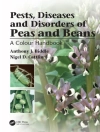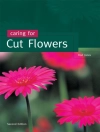In this book we present ten chapters describing the synthesis and application of nanomaterials for health, food, agriculture and bioremediation. Nanomaterials, with unique properties are now being used to improve food and agricultural production. Research on nanomaterials is indeed revealing new applications that were once thought to be imaginary. Specifically, applications lead to higher crop productivity with nanofertilisers, better packaging, longer food shelf life and better sensing of aromas and contaminants. these applications are needed in particular in poor countries where food is scarce and the water quality bad. Nanotechnology also addresses the age old issue of water polluted by industrial, urban and agricultural pollutants. For instance, research produces nanomaterials that clean water more efficiently than classical methods, thus yielding water for drinking and irrigation. However, some nanomaterials have been found to be toxic. Therefore, nanomaterials should be engineered to be safe for the environment.
Table des matières
Chapter 1: Active nanocomposites in food contact materials.- Chapter 2: Nanopackaging of food.- Chapter 3: Food-grade nanoemulsions for protection and delivery of nutrients.- Chapter 4: Genotoxicity of nanomaterials in food.- Chapter 5: Reverse micelles for nanoparticle synthesis and biomolecule separation.- Chapter 6: Nanotechnology delivery systems of coenzyme Q10: pharmacokinetic and clinical implications.- Chapter 7: Enzymatic nanobiosensors in the agricultural and food industry.- Chapter 8: Transformation of natural products into synthetic copolymers.- Chapter 9: Nanoparticles for biofuels production from lignocellulosic waste.- Chapter 10: Iron oxide nanoparticles to remove arsenic from water.
A propos de l’auteur
Shivendu Ranjan
Shivendu Ranjan is currently working as DBT-Research Fellow, Department of Biotechnology, Ministry of Science and Technology, Govt of India at VIT University, Vellore, Tamil Nadu, India. He is also serving for a non government organization as an Honorary-Director, Research Wing, Veer Kunwar Singh Memorial Trust, Chapra, Bihar, India. He is the Founder-Director at Xpert Arena Technological Services Pvt. Ltd., India (www.xpertarena.com); this company is dedicated to serve in online and offline sectors with a vision to simplify the education. He has also founded and drafted the concept for first edition of “
VIT Bio Summit” in 2012 and the same has been continued till date by the university.
His area of research is multidisciplinary which are as but not limited to: Nano-food technology, Nano-agri technology, Nanobiotechnology, Nano-toxicology, Natural products technology, Natural products chemistry, Bio-business, Foodchemistry and Food Engineering. He has published many scientific articles in international peer reviewed journals and also serving as editorial board member and referee for reputed international peer reviewed journals. He has bagged several awards from different organizations e.g. Best poster award, achiever award, research award, young researcher award
etc.
Nandita Dasgupta
Nandita Dasgupta is currently serving as Research Associate at VIT University, Vellore, Tamil Nadu, India. She has exposure of research institutes and industries including CSIR-Central Food Technological Research Institute, Mysore, India and Uttar Pradesh Drugs and Pharmaceutical Co. Ltd., Lucknow, India. Her areas of interest include toxicological analysis, natural products technology, nanobiotechnology and agri-food technology.
She has published many scientific articles in international peer reviewed journals and also serving as editorial board member and referee for reputed international peer reviewed journals. She has received Elsevier Certificate for “Outstanding Contribution” in Reviewing from Elsevier, The Netherlands. She has also been nominated for Elsevier advisory panel for Elsevier, The Netherlands. She was the Guest Editor in Journal of Chemistry for the special issue entitled “Food Nanotechnology Opportunities and Challenges”. She has received several awards from different organizations e.g. Best poster award, young researcher award, Special achiever award, research award,
etc.
Eric Lichtfouse
Eric Lichtfouse, is a soil scientist at the French National Institute for Agricultural Research (INRA). He has invented the 13C-dating method(1) allowing to measure the dynamics of soil organic molecules, thus opening the field of molecular-level investigations of soil carbon sequestration. Chief Editor of the awarded journal Agronomy for Sustainable Development(3), he has raised the journal rank from 29/53 in 2003, with an impact factor of 0.56, to 2/81 in 2014, with an impact factor of 3.99, in the Agronomy category. He is also Chief Editor and founder of the journal Environmental Chemistry Letters(4) and the book series Sustainable Agriculture Reviews(5). He is lecturing scientific writing and communication in universities worldwide(6). His publication assistance service at the INRA has founded the french-english newsletter Publier La Science(7). He has published the book Scientific Writing for Impact Factor Journal(8). This textbook describes in particular the micro-article(9), a new tool to identify the novelty of experimental results. Further details are available on Slideshare(10), Linked In(11), Research Gate(12), Researcher ID(13) and Orcid(14).
1) http://dx.doi.org/10.1007/s10311-011-0334-2
2) http://archive.sciencewatch.com/inter/jou/2010/10nov Agr Sus Dev
3) http://www.springer.com/journal/13593
4) http://www.springer.com/journal/10311
5) http://www.springer.com/series/8380
6) http://fr.slideshare.net/lichtfouse/scientific-writing-and-communication, https://www.youtube.com/playlist?list=PLKEz5Pbi4p3By53Q0gcl KPe SBTK2HJGK_
7) http://www6.inra.fr/caps-publierlascience
8) https://www.novapublishers.com/catalog/product_info.php?products_id=42211
9) http://fr.slideshare.net/lichtfouse/micro-arten
10) http://fr.slideshare.net/lichtfouse
11) https://fr.linkedin.com/in/ericlichtfouse
12) https://www.researchgate.net/profile/Eric_Lichtfouse
13) http://www.researcherid.com/rid/F-4759-2011
14) http://orcid.org/0000-0002-8535-8073












